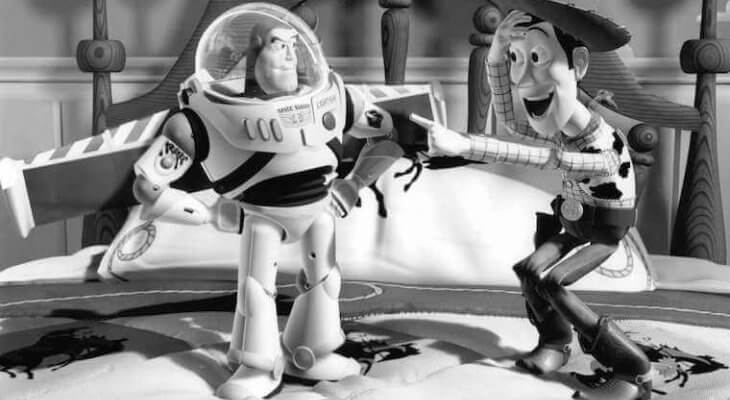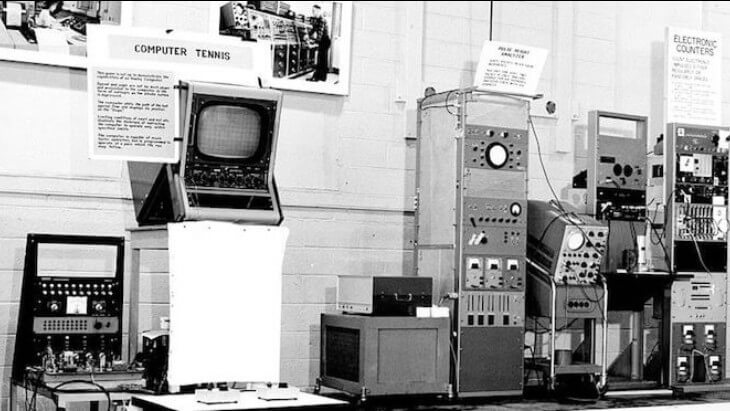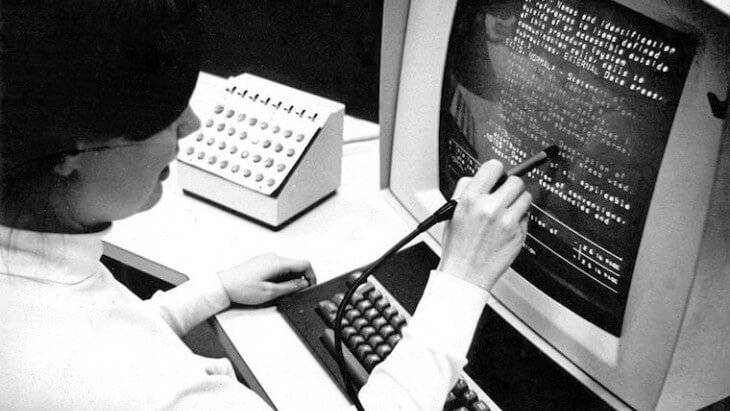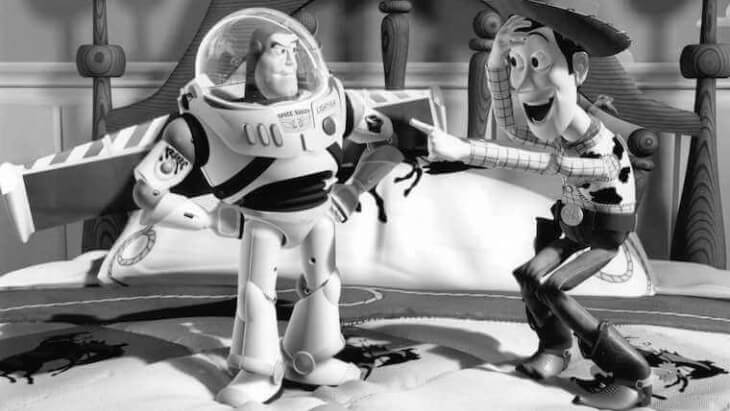April 6th, 2017
How Animation came to your living rooms – The journey of Computer Graphics

If you are writing an essay on the greatest inventions of all time, it is guaranteed that you will mention Computer within the first minute of your writing. Daily life in 21st century is impossible without computers. Governments, Law and Order, Educational Institutes, Hospitals, Banks, Traffic Controls, Workplaces… Nothing will function smoothly without computers. If the majority of industries make use of computers to record, retrieve and analyse data there is one medium that uses it to tell stories. The entertainment medium! Computer graphics have now become a regular entity in entertainment forums, especially in movies.
The beginning of computer graphics can actually be traced way back to 1897 when German physicist Ferdinand Braun invented the first Cathode Ray Tubes known as the ‘Braun Tube’. This facilitated the first two dimensional electronic displays that responded to user input. However, computer graphics remained comparatively unknown until the 1950s. It was in the cold war period that digital computers witnessed its initial technological advancements. Whirlwind I, a vacuum tube computer developed by Massachusetts Institute of Technology (MIT) was the first among digital computers that operated for real time output. It was also one of the first systems to make parallel calculations and the first to use magnetic core memory. The system was developed for U.S Navy and its success gave shape to Whirlwind II which the United States Air Force used for their Semi – Automatic Ground Environment (SAGE) defense system. Whirlwind was also the base for the development of most of the business and minicomputers of 1960s. What this did was it established CRT as an affordable interaction interface. In 1954, Douglas T Ross who worked at Whirlwind SAGE wrote the first hand drawn graphics input program to a computer. His was a personal experiment that captured his finger’s movement and displayed it back onto a display scope. Douglas later went on to say that, that was one of his few programs which worked the first time! Douglas is credited as the Father of Automatically Programmed Tools and he is well known for developing the word CAD for Computer Aided Design. Douglas scored again in 1959 while working at MIT as he exhibited the scope image of a Disney character by transferring mathematical statements into computer generated machine tool vectors.
The first videogame to feature recognizable graphics work was ‘Tennis for Two’, developed by William Higinbotham in 1958. The game was developed to entertain visitors at Brookhaven National Laboratory. Then, the MIT was stage to another major progress in computer graphics as they developed the TX-2 computer in 1959. The machine made significant advancement in the human computer interaction interface and they made use of Sketchpad, a revolutionary software found by Ivan Sutherland, the Father of Computer Graphics to draw sketches on the computer. Using a light pen, one could easily draw shapes and figures on the computer screen, save them and reuse them. The photoelectric cell on the tip of the light pen emitted an electrical pulse when placed in front of a computer screen and the electron gun of the screen fired directly at it. At any given moment, it was easy to locate where the pen was on screen by simply timing the electrical pulse with electron gun’s present spot. Even the modern day computer graphic programs have their base at this Sketchpad software. An easy way to figure out this is, open your Photoshop. Try drawing a simple square box. You just have to select a box and then sketch the size and location of the box and needn’t worry about drawing perfect lines to form the edges of the box! Another striking feature was that Sketchpad could model objects and not just a picture of objects. For example, with a bicycle model one could change the model of the tires without altering the rest of the cycle or it could stretch its body without twisting the tires.

Image Courtesy: Wikipedia
In 1963, E.E. Zajac, a scientist at Bell Telephone Laboratory created one of the first computer generated animation film ‘Simulation of a two-giro gravity attitude control system’. The film, just under 4 minutes demonstrated that a satellite could be balanced so that there will always be a side which face the earth as it orbits. The animation was created on an IBM 7090 mainframe computer using Stromberg-Calson 4020 film recorder and programmed in FORTRAN. This was followed by such demonstrational animation films made exclusively for fellow scientists and students and Frank Sinden’s ‘Force, Mass and Motion’, Nelson Max’s ‘Flow of a Viscous Fluid’ and ‘Propagation of Shock Waves in a Solid Form’ were the notable ones among them.
.
Computer graphics engrossed the attention of many corporations by mid 1960s and in 1964 IBM introduced their 2250 graphics terminal which was the world’s first commercially available graphics computer. On the 1024 by 1024 grid of the system, a display list of line segments were stored in computer’s memory and then repainted on the CRT up to 40 times per second. By altering the display list, the computer changed the display. The system could display any character set or font but however the fonts were simplified for performance reasons. The introductory price of this computer system was 280000 dollars in 1964 which is equivalent to more than one and a half million! The first computer graphic product for consumers was a video game named ‘Odyssey’. Developed by Ralph Baer, the game used very simple and inexpensive electronic parts and allowed the user to move points of light around a screen. In 1966, Ivan Sutherland came to limelight yet again as he invented the first computer controlled Head Mounted Display. With individual wireframe images for each eye, this gave the users a stereoscopic 3d vision of the computer scene. The algorithm for ray casting which is the basis of modern day 3D graphics and photo realism was developed by Arthur Appel in 1968.

Image Courtesy: Wikipedia
University of Utah who had already hired Ivan Sutherland in 1967 was home to most of the significant advancements in the transformation of computer graphics during the 1970s. With the presence of David C Evans and Ivan Sutherland, the University of Utah became the unrivalled centre of computer graphics research during that era. The hidden- surface algorithm, one of the giant leaps in computer graphics was created at Utah. The algorithm simply specified that, in order to correctly draw an image of a 3D model, the computer should decide which surfaces are behind the model from a viewer’s point of view and thus should be hidden when it creates the image. The 3D Core Graphics System also known as Core designed for this was the first ever graphical standard developed. Some of the genius brains that worked in Utah to make this happen were Edwin Catmull, who later became the founder of Pixar and John Warnock who founded Adobe Systems. In addition to this Henri Gouraud, Jim Blinn and Bui Thong Pong developed Gouraud Shading and Blinn-Phong shading models which enabled graphics to accurately portray depth and move out of the flat look.
The technology that hade only been an academy discipline slowly started expanding its territory to a much larger audience during the modernization and commercialization of computer graphics in the 1980s. The computer graphic terminals became intelligent semi stand alone and stand alone work stations as bit slice and 16 bit microprocessors started getting easily available. Instead of depending on central mainframes or minicomputers graphics processing were easily shifted to workstations. One of such earliest workstations were Orca 1000, 2000 and 3000. Orca 3000 used Motorola 68000 and AMD bit slice processors with Unix as its operating system. While Orca mainly dealt with the engineering industry, personal computers such as Commodore Amiga and Macintosh drew the attention of artists and designers. Graphical User Interfaces (GUI) became a regular component of modern computers since 1980s as it used symbols and pictures to present data than plain text.
LINKS- 1 Computer Graphics System was developed by Japan’s Osaka University in 1982 to facilitate realistic rendering. This supercomputer used upto 257 Zilog Z8001 microprocessors. Their goal was to parallely process each pixel using ray tracing. This was used to create world’s first planetarium like view of the heavens which was presented during Tsukuba International Exposition in 1985. In 1984, this was the world’s most powerful computer.
With the enchanting popularity of ‘Star Wars’, Lucasfilm and Industrial Light and Magic became the most sought out studios for film graphics. In the movie industry, one of the best iconic moments during that era was the first fully computer generated character, a stained glass knight, in the film ‘Young Sherlock Holmes’. In 1988, Pixar developed ‘Shaders’, program specifically designed to perform shading as an individual algorithm but not until the next decade did the public witness the results of this technological progress. During the late 1980s, Pixar also developed some of the first complete CG Short Films using Silicon Graphics computers.
The 1990s era saw the arrival of 3D modeling on a large scale and this improved the overall quality of CGI. Rendering became possible in home computers which was earlier restricted to workstations that cost thousands of dollars. Microsoft Windows and Apple Macintosh machines that ran Autodesk products like 3D studio started gaining prominence. Graphic Processing Units rose to popularity by the end of the decade and it still continues its impact in the modern computer graphics. The motion picture industry witnessed its first ever feature length computer animated film in 1995 through ‘Toy Story’. The commercial success of this film produced by none other than Pixar was measured in billions! In 1999, Nvidia introduced GeForce 256 which is the first home video card termed as GPU. Nvidia described the product as “integrated transform, lighting, triangle setup/clipping and rendering engines. During the 1990s computers also started to adopt common frameworks such as DirectX and OpenGL. From then, due to more powerful hardware and modeling software graphics have become expertly detailed and realistic.

Image Courtesy: Toy Story
By the start of 2000s, 3D rendering became a standard function as 3D Graphic GPUs became the minimum necessity for desktop computers. Video cards that fell in line with Nvidia GeForce 256 also started flooding the market. As Nvidia and AMD started offering economical chipsets even moderate machines accommodated 3D capable GPUs! Shaders, developed in 1980s for specialized processing on GPU were now supported on majority of consumer hardwares. This accelerated computer graphics considerably and there was more room for improved texture and shading.
Perhaps the greatest change in the 21st century Film Industry is the boundless use of computer graphics. Pixar continued its legacy with ‘Finding Nemo’ and there were cartoon films like ‘Madagascar’ and ‘Ice Age’ that ruled the box office in the beginning of 21st century. ‘Final Fantasy : The Spirits Within’ released in 2001, was the first fully CG feature film to use photo realistic CG characters and the one fully made with motion capture. Then, with films like ‘Lord of the Rings’, ‘Avatar’, ‘Life of Pi’, ‘Gravity’ etc computer graphics went way beyond anything man had ever thought of in the past. Today imagination is the only limit. There is absolutely nothing that cannot be created with computer graphics.
Human beings have five important senses. Likewise, multimedia too have five major components. They are, Text, Images, Audio, Video and Animation. Multimedia just doesn’t exist without animation. And now, we even see teenagers working around high end computer systems and game machines in their rooms! Some of the computer animation that required mainframe or supercomputers can be achieved right in your room today!













